Debt Trap
By Colin Twiggs
August 7, 2008 7:00 a.m. ET (9:00 p.m. AET)
These extracts from my trading diary are for educational purposes and should not be interpreted as investment or trading advice. Full terms and conditions can be found at Terms of Use.
Household Debt
The ratio of household debt to GDP spiked up in recent years as investors were lured into borrowing money at artificially low interest rates in order to buy stocks and real estate as a hedge against inflation — in the mistaken belief that the assets would continue to appreciate. The result was an inevitable asset bubble as demand for real assets exceeded supply. Prices were bid up to the point that asset yields were negligible and expected returns were based primarily on future speculative gains from inflation. The financial sector, spurred on by soaring profits and fat bonuses, circumvented lax regulatory controls to expand debt to record levels — ignoring prudent banking standards to include borrowers with bad credit histories — again in the mistaken belief that ever-increasing asset prices would save them from defaults.
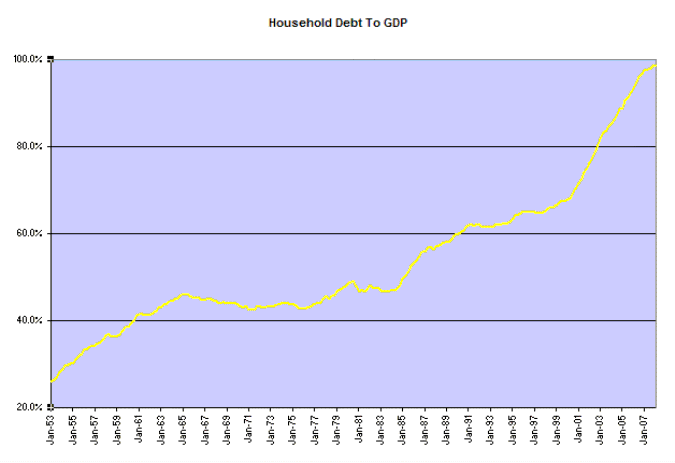
My data does not go back far enough, but the last major peak of Household Debt to GDP was 44 percent, at the start of the Great Depression, before declining to a low of 12 percent in 1943.
Most chartists would recognize the accelerating trend, or blow-off, that inevitably leads to a sharp reversal. The same self-reinforcing cycles occur in nature, expanding rapidly before exhausting their fuel supply. Brushfires are a typical example.
The results of the credit expansion and consequent asset bubble are now familiar to all. The bubble could only continue to expand as long as there was a steady source of new buyers. As soon as new buyers dried up, prices stopped advancing and investments based on speculative price increases began to fail. When the contraction starts, the exact opposite, a negative reinforcing cycle, occurs. Falling prices cause defaults to rise. Prices fall even lower, which in turn deters new buyers — and forces down prices even further.
The Fed now faces a dilemna. Existing levels of debt are not sustainable at normal interest rate levels of 5 or 6 percent (real interest rates of 2 to 3 percent after adjusting for CPI). If they raise interest rates, the financial sector will collapse as households attempt to reduce debt exposure, causing asset prices to fall. On the other hand, if they maintain interest rates at artificially low levels, inflation will take hold — causing further damage to the economy.
Inflation expectations have already started rising. If left unchecked we could face another period similar to the "double-recession" of the early 1980s.
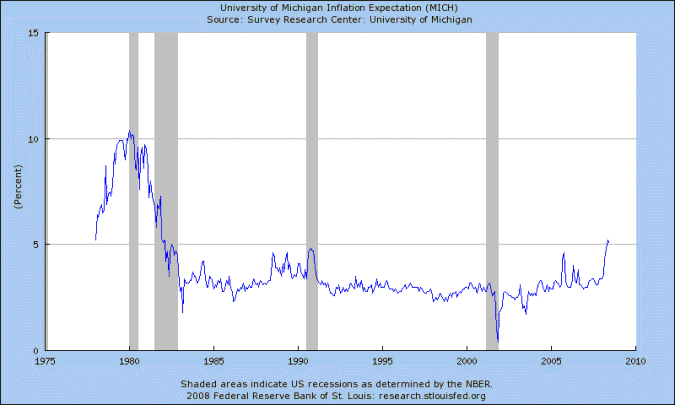
Money supply growth in excess of 15 percent in recent years has caused an even bigger problem in Australia.
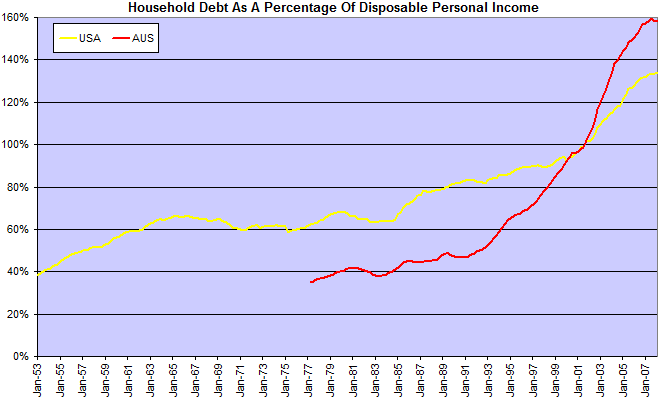
There is no means of avoiding the final collapse of a boom brought about by credit (debt) expansion.
The alternative is only whether the crisis should come sooner as the result of a voluntary abandonment
of further credit (debt) expansion, or later as a final and total catastrophe of the currency system involved.
~
Ludwig von Mises: founder of the Austrian school of economics.
Stocks
The Dow shows medium-term accumulation, with Twiggs Money Flow (21-day) holding above the zero line. Breakout from the small triangle signals a rally, but volumes remain low. We are in the midst of a bear market and this is is likely to be another "dead cat bounce".
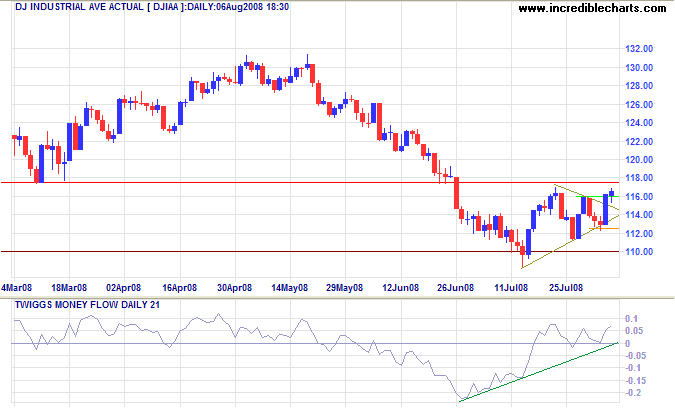
Crude Oil
Crude oil, while undergoing a secondary correction, remains in a primary up-trend.
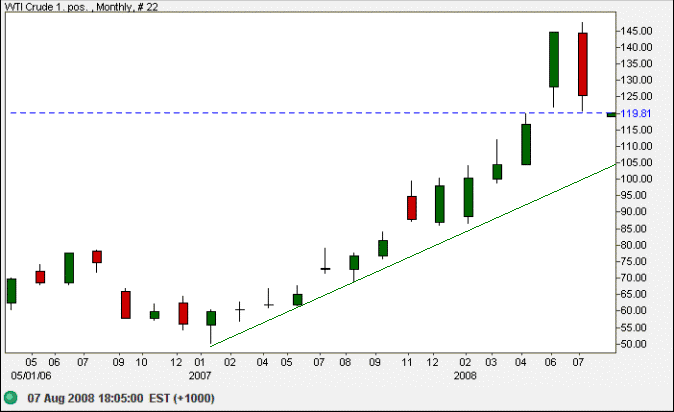
Treasury Yields
Ten-year treasury yields are consolidating in a triangle around 4.00 percent. Upward breakout is likely and would signal another rally. Yield differentials (with 13-week treasury bills) remain healthy at above 2.0 percent.
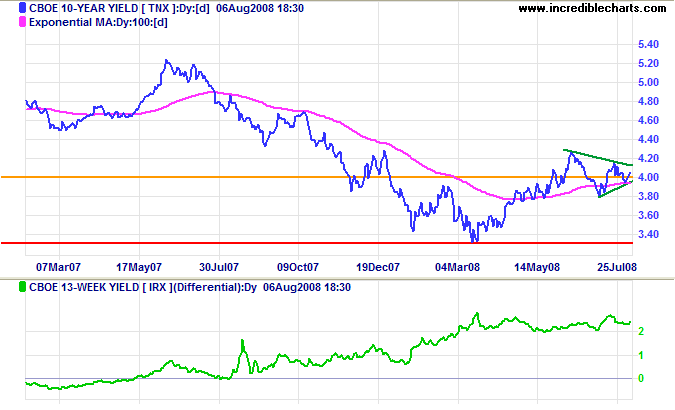
The Fear Index
The spread between the fed funds rate and 3-month T-bills is low. Tensions have eased since the housing/GSE rescue package was passed.
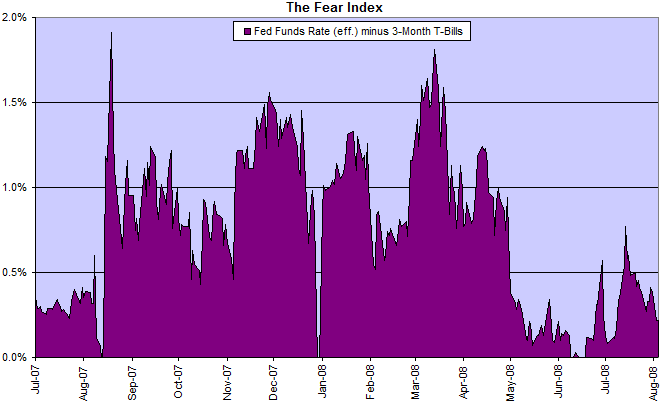
Financial Markets — Commercial Paper
The rising spread between financial commercial paper and the fed funds target rate of 2 percent maintains pressure on institutions reliant on wholesale funding.
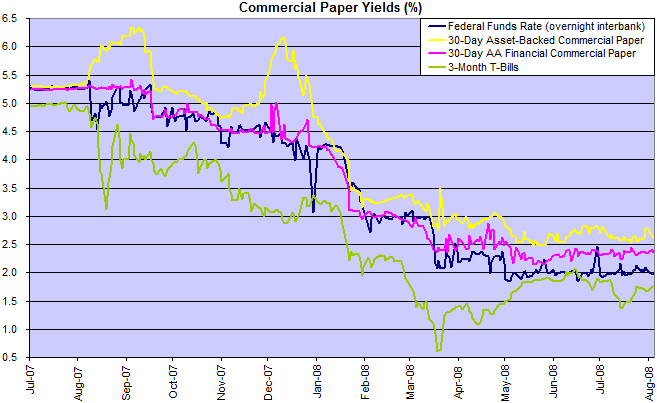
The down-trend in commercial paper continues.
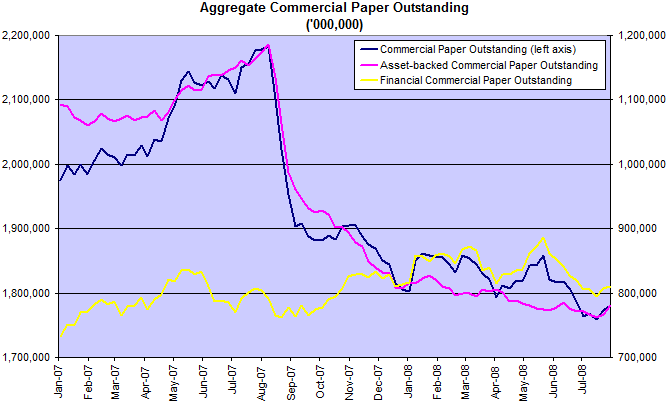
Corporate Bonds
Corporate bond yields are increasing in sympathy with treasurys. Spreads remain high, in anticipation of rising default levels.
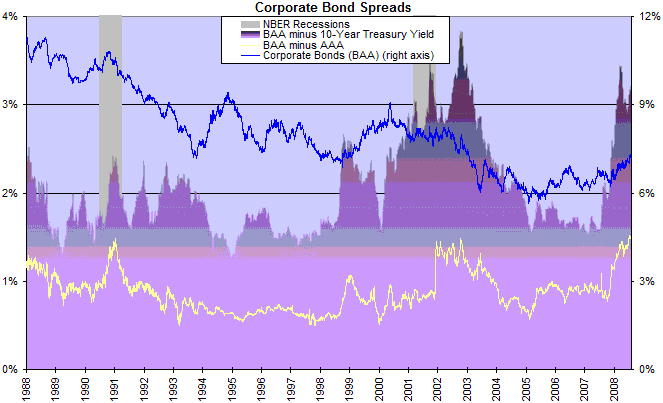
Housing
Fixed mortgage rates are trending upwards in conformance with long-term treasury yields, while spreads are also rising in anticipation of further default problems.
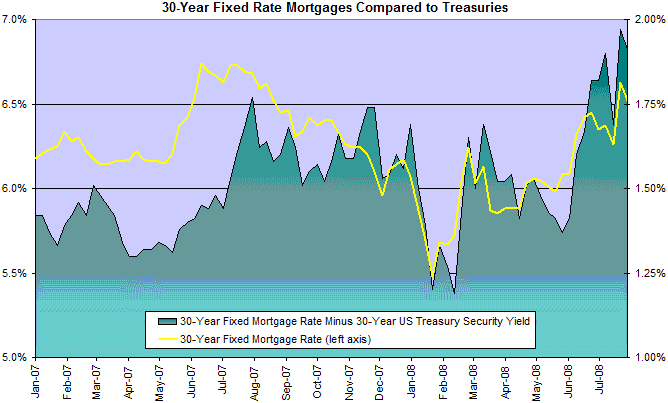
Bank Credit
Credit growth is falling as banks shore up their balance sheets, slowing consumption and new investment.
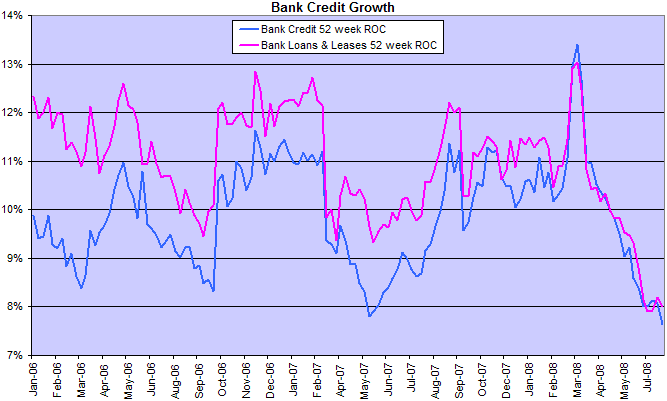
Employment
Unemployment is trending upwards, warning of a recession, but remains below its 2003 peak.
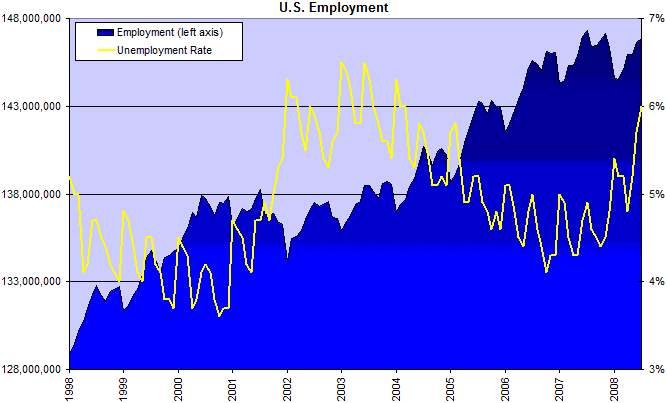
Lampis the shipowner being asked how he acquired his wealth, answered:
With no difficulty, my great wealth; but my small wealth (my first gains), with much labor.
~
Epictetus: Enchiridion
To understand my approach, please read About The Trading Diary.

Author: Colin Twiggs is a former investment banker with almost 40 years of experience in financial markets. He co-founded Incredible Charts and writes the popular Trading Diary and Patient Investor newsletters.
Using a top-down approach, Colin identifies key macro trends in the global economy before evaluating selected opportunities using a combination of fundamental and technical analysis.
Focusing on interest rates and financial market liquidity as primary drivers of the economic cycle, he warned of the 2008/2009 and 2020 bear markets well ahead of actual events.
He founded PVT Capital (AFSL No. 546090) in May 2023, which offers investment strategy and advice to wholesale clients.
